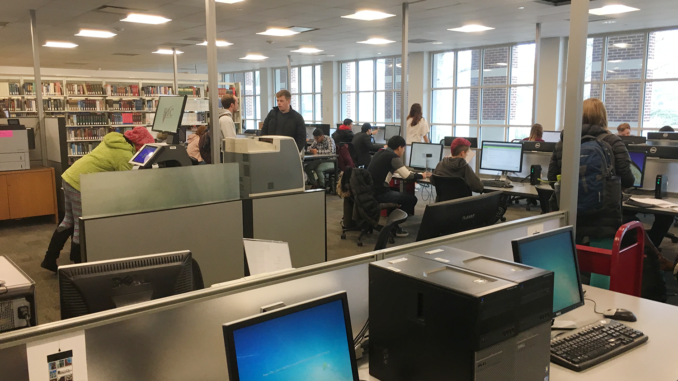
Truman State University will charge a new classroom technology fee for most courses starting in fall 2018, in addition to the current $17 technology fee.
The current technology fee, charged to each student on a semesterly basis, is used by Pickler Memorial Library and Information Technology Services to update bandwidth. The current fee is the lowest of any public university in Missouri. The new fee will be $4 per credit hour for classes taught in a classroom. The new fee will go toward updating classroom technology infrastructure like computers and projectors, something Truman has not had a steady stream of funding for in recent years.
Dave Rector, vice president for administration, finance and planning, said the University wants to keep monitors and computers in classrooms up-to-date, and the fee does not apply to courses where students would not usually meet in a classroom like internships, practicum and independent studies. Rector said the fee will apply to about 80 percent of classes.
Rector said the current $17 technology fee generates about $112,000 per year for ITS and about $61,500 per year for the library. He said the new classroom technology fee should generate about $500,000 per year.
Rector said the current $17 fee is lower than many other institutions because the students who proposed the fee wanted to keep it that way. He said even though the current technology fee needed to be approved by the student body, the new per-credit-hour fee will not need student approval because it does not apply to all classes.
Rector said Truman uses fees to raise revenue when the school cannot raise tuition because of Missouri’s tuition cap or political pressure. He said even though the tuition cap only applies to in-state students, out-of-state tuition cannot be raised too much because out-of-state students will find less expensive options for school.
Chief Information Officer Donna Liss said the money ITS gets from the current technology fee is used to update the campus’ internet bandwidth — the total amount of data the University’s internet connection can support — as internet usage increases on campus.
“We are a residential campus with a lot of students who are very active, so we’ve got a lot of bandwidth for our size,” Liss said. “It’s running everything. We’ve got our television going over this, we’ve got our phone lines going over this.”
Liss said the University gets most of its bandwidth from two different organizations. She said it is not just a matter of upgrading the infrastructure — the University must pay an annual fee for access to the bandwidth.
Liss said the last time ITS upgraded the bandwidth, it was quadrupled, but the University might have to upgrade again soon because internet usage occasionally reaches the University’s limit during peak hours.
“It’s lasted a good long while,” Liss said. “This gave us a couple of years of not having to worry about bandwidth, so it’s been a real good effort.”
Liss said the amount and level of technology in a classroom varies by classroom and discipline, and ITS is conscious of each discipline’s needs.
Liss said every classroom computer is replaced after five years. She said classroom projectors have to be replaced periodically as well, and the University will replace 13 before fall 2018.
“We’ve got a lot of classrooms on campus because we have small class sizes,” Liss said. “We actually have more classrooms that we have to outfit with the equipment. It’s just becoming more and more important for faculty to use technology in the rooms.”
Liss said there has never been a dedicated budget for maintenance and upgrades of classroom technology. She said in previous years, ITS has requested available funding at the end of the fiscal year to update technology infrastructure and has worked directly with academic departments if there was specific work needed in classrooms. Liss said the new fee is an effort to make funding for these projects more long term.
Liss said ITS will work with each school’s deans to determine upgrade priorities.
